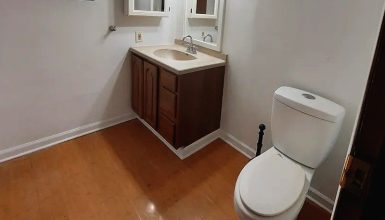Fiberglass steps are popular for mobile homes. Why? They’re light, durable, and resist rust. But even these tough steps need care. Small cracks or wear can turn big if ignored. Warly fixing them saves time and keeps you safe. Repairing fiberglass mobile home steps is a straightforward process. It requires some essential tools and materials. Follow these steps for a successful repair.
Tools and materials needed:
– Safety glasses and gloves
– Brush
– Soapy water
– Medium and fine-grit sandpaper
– Fiberglass cloth
– Fiberglass resin and hardener
– Mixing container and stick
– Paint (optional)
Repair Process
1. Safety First
Wear gloves and safety glasses. Fiberglass can irritate the skin and eyes.
2. Clean the Area
Cleaning the area is vital. It’s like prepping a canvas before painting. You need a brush and soapy water for this. Scrub the damaged spot well. This step removes all the dirt and tiny bits that could mess up your repair work. Think of it as giving the area a fresh start. Once it’s all clean, let it air dry. It’s important to ensure it’s completely dry before moving to the next step.
3. Sand the Damaged Area
Now, it’s time to sand. Grab medium-grit sandpaper for this. You’re not just sanding for the sake of it. The goal here is to create a rough surface. Why? So the repair materials can stick better. It’s like scratching a lottery ticket to reveal the numbers beneath. Go around the damaged part and give it a good sanding. Don’t be too rough, but make sure you roughen up the whole area you plan to fix.
4. Cut the Fiberglass Cloth
Next up is the fiberglass cloth. This is what will patch up the damage. First, measure the area you’ve just prepped. Now, cut a piece of fiberglass cloth that’s a bit larger than the damage – at least 2 inches more on all sides. It’s like cutting a bandage for a wound; you want it big enough to cover the whole area securely. This cloth is the key player in your repair work, so make sure it’s cut to just the right size.
5. Mix the Resin
Now, it’s resin time! This is where the magic starts. Grab a mixing container. You’re going to mix fiberglass resin and hardener. It’s super important to follow what the manufacturer says on the package. Each resin might be a bit different. Think of it like baking a cake; you’ve got to get the measurements just right. Once you’ve got them in, stir them up thoroughly. You want a nice, even mix with no lumps.
6. Apply the Resin
With your resin ready, take a brush and apply a layer onto the sanded area. This is like putting the glue down before you stick something. Then, take that fiberglass cloth you cut earlier and lay it over the resin. Make sure it sits just right. Smooth out any wrinkles or bubbles. This step is crucial. You want the cloth to be perfectly flat and in full contact with the resin.
7. Add More Resin
After the cloth is in place, it’s time for more resin. Brush another layer on top of the fiberglass cloth. Think of this as sealing in the cloth with a protective layer. You want to make sure the cloth is totally soaked with resin. But watch out for air bubbles! They can weaken your repair. Smooth them out as you go. It’s a bit like smoothing frosting on a cake – you want it even and bubble-free.
8. Let It Cure
Patience is key in this step. You’ve got to let the resin cure. Just like waiting for the paint to dry, this part needs time. Check the product instructions for how long. It might take a few hours. During this time, the resin hardens and sets the repair in place. It’s like waiting for a cake to be baked in the oven. You can’t rush it, or the job won’t be done right.
9. Sand the Repaired Area
Once the resin is hard and set, it’s sanding time again. This time, use fine-grit sandpaper. You’re aiming to get the area smooth. It’s kind of like smoothing out icing on a cake. Remember to wear a mask. Fiberglass dust isn’t good to breathe in. Sand gently until the repaired spot feels as smooth as the rest of the steps.
10. Paint (Optional)
Here’s where you can get creative. If you want, you can paint the repaired area. Choose a fiberglass paint. Match it to the color of your steps for a seamless look. It’s like adding the final touch to make everything look perfect.
Last but not least, check your work. Look over the steps carefully. Make sure the repair looks solid and feels sturdy. It’s like checking a repair job on a bike before taking it for a ride. You want to be sure everything is safe. Test the steps gently at first. If everything feels good, your repair job is a success!

















